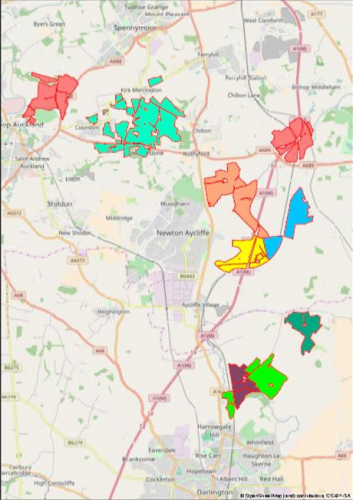Ref: CSFF010003
Lead: David Morley, david.morley@hhland.co.uk
Group members: 8
Length of agreement: 5
Area of group (Hectares): 1838
Working with the Bright Water Landscape Partnership, the Group will deliver landscape-scale management options that will connect, maintain, restore or create a number of priority habitats identified in the Tees Lowlands Statement of Priorities, including: lowland fens; floodplain grazing marsh; reed beds; riparian habitat; arable field margins. The Group aims to extend and link priority habitats throughout the Skerne catchment, contributing to improvements in water quality and potentially flood risk management, thus delivering multiple priorities and maximising environmental benefits.
The Skerne catchment is important for its breeding wader assemblage, including lapwing, curlew, redshank and snipe, and also for corn bunting, as identified in the Statement of Priorities. The Group will deliver habitat improvements for these priority species.
With regard to water quality, working in partnership with Bright Water and CSF, we will deliver measures to reduce diffuse pollution, especially phosphates and sediment, across the Skerne catchment. This may involve establishing swales, sediment traps, buffer strips and erosion control, which will also support flood risk management.
The Group aims to manage and protect a range of nationally and locally important historic features throughout the catchment, especially from the impact of cultivation and scrub growth.
The Group hopes to initiate woodland planting across the Skerne catchment, which will deliver multiple priorities, including biodiversity, water quality (by alleviating and intercepting diffuse pollution) and reducing flood risk (by slowing the flow and reducing erosion).
Finally, we will deliver restoration of the network of hedgerows, a top landscape priority in the catchment that will also benefit wild pollinators and create wildlife corridors. In conjunction with arable field margins, hedgerow restoration will help reduce diffuse pollution, reduce erosion, leading to improvements in water quality.

